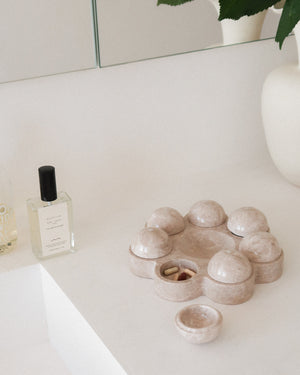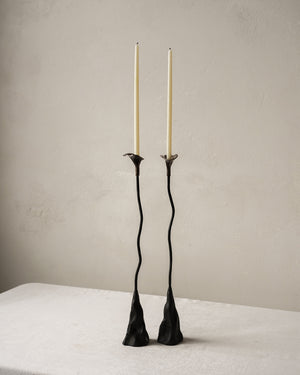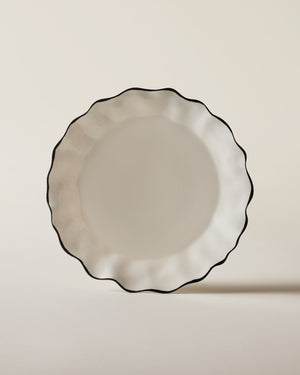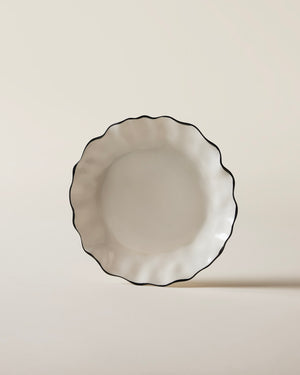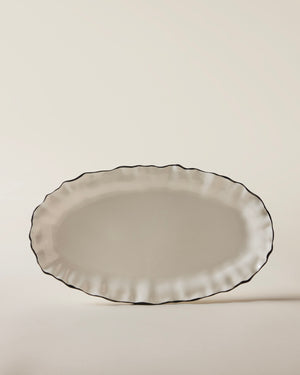WABI-SABI 101
 |
Wabi-sabi is a traditional Japanese aesthetic concept often considered one of the oldest manifestations of minimalism in art. At its simplest, Wabi-sabi is an aesthetic design ideal that stresses the authentic over the artificial, the worn over the new, and the imperfect over the ideal. Wabi can refer to the imperfections of objects, the simplicity of everyday items that fulfill a function rather than a form. Sabi brings to mind wear and tear that reminds us that nothing lasts forever and that signs of age on an object can help us appreciate its value that much more. After all, both natural and man-made objects experience their own lives as they are created and fall into decay. Appreciating this natural process that confirms the authenticity of existence is what Wabisabi is all about.
"PARED DOWN TO ITS BAREST ESSENCE, WABI-SABI IS THE JAPANESE ART OF FINDING BEAUTY IN IMPERFECTION AND PROFUNDITY IN NATURE, OF ACCEPTING THE NATURAL CYCLE OF GROWTH, DECAY, AND DEATH. IT'S SIMPLE, SLOW, AND UNCLUTTERED - AND IT REVERES AUTHENTICITY ABOVE ALL"- Tadao Ando, Japanese Architect |
 Japanese pottery, image via Pinterest
|
|
Peridot Vessel Kalya O'Donoghue |
Starck Mirror |

Tea room at Koto-in built by Sen no Rikyu in the Daitokuji Zen Temple
|
enso by Zen priest Hakuin Ekaku |
7 Principles of Wabi-Sabi:Kanso – Simplicity
|
|
Terracotta Vessel |
 Hun Candlestick in Dark Bronze
|
Wabi-sabi Art & Design:
In the context of art and design, wabi-sabi emphasizes natural materials, simplicity, and a sense of authenticity. Wabi-sabi objects often have a handmade or rustic quality, with visible signs of wear and tear that give them a unique character. The wabi-sabi aesthetic is about finding beauty in the imperfect, and valuing objects that have a sense of history and personality. In recent years, wabi-sabi has become increasingly popular in the world of design, as more people seek to incorporate elements of simplicity, imperfection, and nature into their homes and daily lives.
 Annabel Kutucu
|
|
Japanese pottery, 1600-1700 |
Aged carved wood stool, image via Pinterest |
|
Studio Pottery Vase Sold Out |
Vintage Wood Vessel Sold Out |
|
Axel Vervoordt |
Characteristics of Wabi-Sabi:
|
Chung Chang-Sup, Return 77-A, 1977 |
||

Ethan Stebbens |
|
Wabi-Sabi Architecture:
Historically the most common representation of wabi-sabi in architecture is thought to be the tea house. Sen no Rikyū, one of the earliest known tea masters, changed the traditional tea house from opulent and luxurious to a simpler and more balanced design, embracing imperfections. With a simple design and basic construction, the tea house clearly showcases the concept of Wabisabi, with a focus on imperfect materials and the joy of sharing tea with another person.
|
Ginkakuji, shogun Ashikaga Yoshimasa, 1482 |
Materials used in Wabi-Sabi:
|
Japanese Tea Room, image via Pinterest |
The use of time-worn objects and natural materials is key to attaining that balance and applying the Wabisabi philosophy correctly. Wabisabi interiors are elegant, sparse and imperfect, yet deliver a very modern take on luxury interior design that finds its inspiration in the colors and textures of nature.
|
Yen-Chi Chen |
|
Image via Pinterest |
Names to know within the world of Wabi-Sabi:
|
|
Mitsuo Matsuoka |
